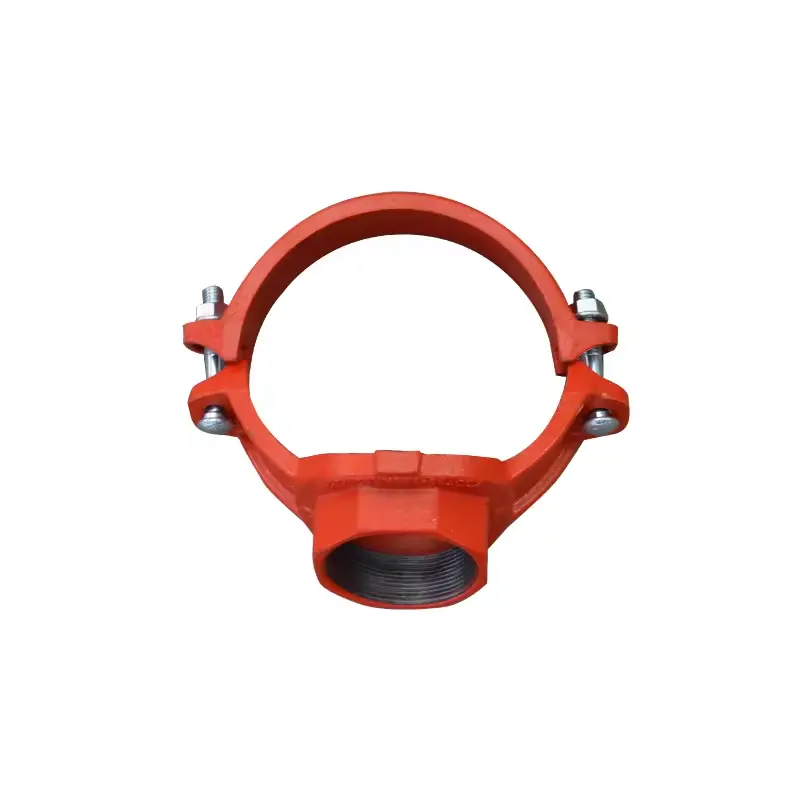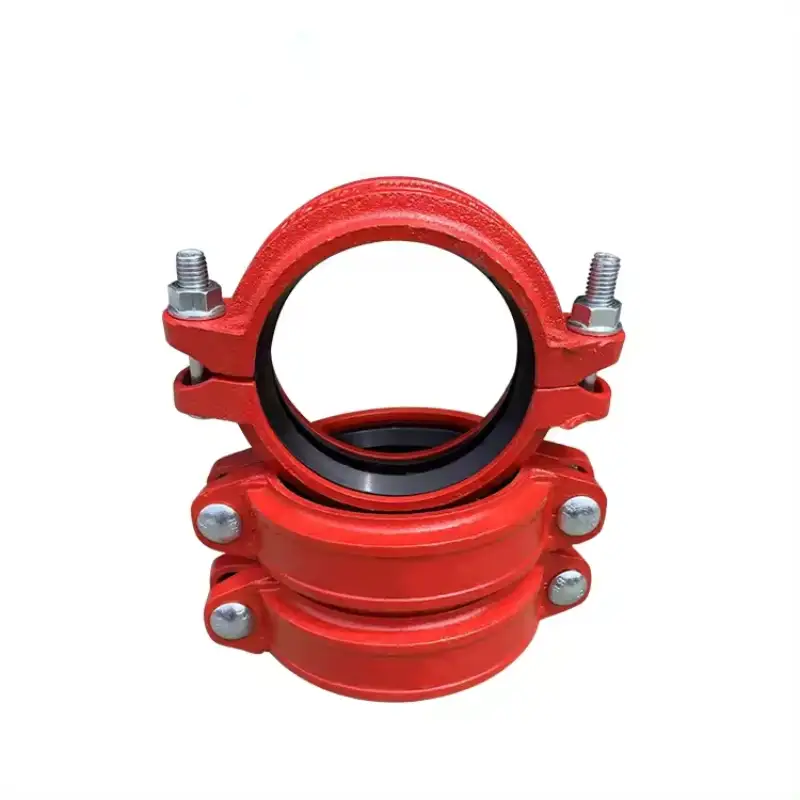Split Rigid Coupling
- Split rigid couplings transmit torque efficiently.
- While maintaining shaft alignment and minimizing backlash.
- Split rigid couplings find application across a wide range of industries and mechanical systems.
- The split rigid coupling is made of ductile iron, which has high strength, durability and corrosion resistance.
Product Description
A split rigid coupling is a mechanical device used to connect two shafts in a rotating system, allowing for the transmission of torque while maintaining alignment and concentricity. Unlike flexible couplings that accommodate misalignment and damping, rigid couplings provide a solid, non-flexible connection between shafts, ideal for applications where precise alignment and torque transmission are critical.
What sets split rigid couplings apart is their design, which allows for easy installation and maintenance without the need to disassemble the entire system. Typically, split couplings consist of two halves that are bolted together around the shafts, forming a secure and rigid connection. This design enables quick assembly and disassembly, making split rigid couplings ideal for applications where downtime must be minimized.
Functionality and Advantages
1. Precise Alignment: Split rigid couplings ensure accurate alignment between shafts, reducing vibration, noise, and wear on rotating components.
2. Easy Installation and Maintenance: The split design of these couplings simplifies installation and maintenance procedures, allowing for quick access to shafts without the need for costly and time-consuming disassembly of equipment. This feature minimizes downtime and enhances operational efficiency in industrial settings.
3. High Torque Transmission: Rigid couplings are capable of transmitting high levels of torque without introducing torsional flexibility or backlash.
4. Compact Design: Split rigid couplings have a compact and lightweight design, making them suitable for installations with space constraints or weight limitations.
Applications Across Industries
1. Power Transmission: In power transmission systems, split rigid couplings connect drive shafts in gearboxes, motors, and generators, ensuring efficient torque transfer and alignment between rotating components.
2. Pumping Systems: Split couplings are commonly used in centrifugal pumps, reciprocating pumps, and other fluid handling equipment to connect the pump shaft to the motor or drive assembly.
3. Conveyor Systems: In material handling applications, split rigid couplings connect shafts in conveyor belts, rollers, and pulleys, ensuring smooth and reliable operation of the conveyor system.
4. Rotating Machinery: Split couplings are integral components in rotating machinery such as fans, blowers, turbines, and compressors, where they facilitate torque transmission and maintain shaft alignment under varying loads and operating conditions.
Please click, If you consider more detailed parameters






